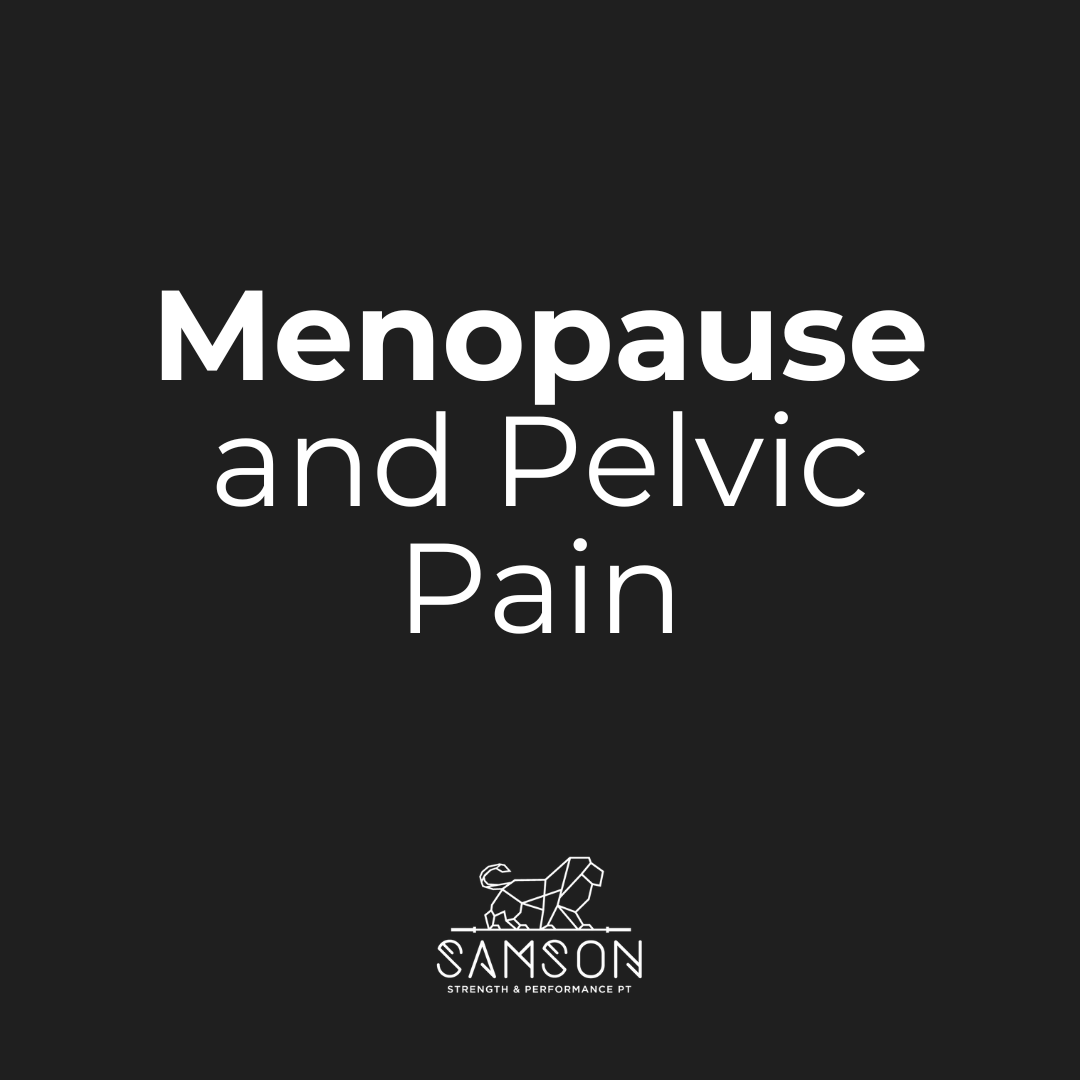Menopause and Pelvic Pain
Menopause is not talked about enough. The changes that occur from this transition in life are often left under-reported, unspoken, and hidden from providers, family, and friends.
Women don't often feel comfortable sharing how once perimenopause symptoms began, their pelvic health was never the same. The link between menopause and pelvic pain is rarely talked about among friends and family. People sometimes talk about the hot-flashes and the mood swings, but what about the changes that are happening to your pelvic floor and your bones?!?
So what stage am I in?
Perimenopause – the time leading up to menopause when a woman may start to experience a variety of symptoms; these are a result of fluctuations in hormone levels.
Menopause -The time when the final menstrual period occurs.
Postmenopause – Starts when a woman has had no menstrual period for 12 months.
In any stage, the body has started to decrease or has altogether stopped making enough hormones such as estrogen, progesterone, and testosterone to continue regulating the body for reproduction. BUT that is not the only function these hormones have.
Estrogen receptors are found throughout the body, including in the reproductive organs, breasts, bones, brain, liver, skin, and blood vessels. During menopause, the number of estrogen receptors in certain areas, such as the brain, may increase as the body attempts to compensate for declining estrogen levels.
This increase in receptors could contribute to menopausal symptoms like mood swings and cognitive changes, as the body works to make the most of the limited estrogen available.
The pelvic floor and its neighboring tissues/organs also have estrogen receptors which help to keep pelvic tissues, muscles, and the vaginal pH balanced. Menopause and pelvic pain can be tied together due to the changes experienced, but what are some other pelvic symptoms that you might experience due to menopause?
Common symptoms that may occur during menopause include:
Leaking urine when you cough, sneeze, run, jump, or do vigorous exercise—this is known as stress incontinence.
Frequent or urgent need to urinate, sometimes referred to as “key in the door syndrome,” or even urge incontinence. This indicates an overactive bladder.
A heavy sensation in your vagina, like feeling as though you're sitting on an egg or noticing a heaviness that wasn't there before. This could be a sign of pelvic organ prolapse (POP).
Pain during sex, urinary infections/cystitis, or occasional itching and soreness in the vulva. These are typically caused by vaginal dryness.
Constipation, which can result from pelvic organ prolapse (when feces become trapped due to a prolapse in the back wall of the vagina, called a rectocele), general aging, or a decrease in hormones.
Vaginal health is a key aspect of healthy aging for all women. Estrogen plays a crucial role in maintaining the strength and flexibility of the tissues in the vulva, vagina, bladder, and pelvic floor muscles.
When estrogen levels decline during menopause, many women experience pelvic symptoms, particularly genitourinary issues. These symptoms, once known as Atrophic Vaginitis or Vulvovaginal Atrophy (VVA), have more recently been reclassified as 'Genitourinary Syndrome of Menopause' (GSM) to better reflect the wide range of changes that occur during this phase. GSM is a term used to describe the multiple anatomical and functional changes that affect the external genitalia, vagina, bladder, urethra and pelvic floor tissues which occur at menopause.
Common symptoms of GSM:
Vaginal/Vulval symptoms:
Dryness
Burning/itching
Vaginal shortening and narrowing
Bladder symptoms:
Urinary Urge
Urinary Incontinence
Bladder infections
Recurrent urinary tract infections
Stress Urinary Incontinence
Pain with urination (Dysuria)
Sexual symptoms:
Pain or discomfort with sexual intercourse (Dyspareunia)
Loss of libido
Heaviness:
Pelvic organ prolapse
It’s important to consider how your lifestyle impacts your pelvic floor, bladder, and bowel health. This is a good time to reflect on factors such as weight, exercise habits, fluid intake, and maintaining a well-balanced diet. Taking time for self-care and reducing stress is also key when it comes to managing urgency and urge incontinence.
So why is no one talking about these pelvic health symptoms even though pelvic floor health is crucial? GSM affects more than 50% of postmenopausal women and can significantly impact quality of life. However, due to the sensitive nature of these symptoms or a lack of awareness about available treatments, many women do not seek medical help.
Unlike menopausal hot flashes and night sweats, which typically ease or stop over time, pelvic symptoms tend to persist or even worsen.
This does not mean that life is over and there is nothing we can do about it. On the contrary! There is so much we CAN do about these symptoms. The first step would be to find a trusted pelvic floor physical therapist in your area.
We encourage you to advocate for your health and do not take “This is normal for your age.” as an answer! Find the help you need. If you don’t like the answer your doc gives you, find another doctor.
A pelvic floor physical therapist can help guide you on a pelvic floor program that fits into your daily routine and decreases your pain or symptoms over time.
Looking for pelvic health physical therapy in Jacksonville Beach, FL?
If you’re looking for personalized, one-on-one sessions to address your perimenopause or menopause pelvic health concerns, we provide pelvic health physical therapy services to women in the Jacksonville Beach area.
If you’re looking for providers who will listen to you and help you get to the root cause of your pelvic concerns, we’ve got you. We’re here to help you if you’re experiencing pelvic pain, pelvic heaviness, leaking, or want to learn to safely work out during perimenopause or menopause, we can help!
Get started today by booking a discovery call.

